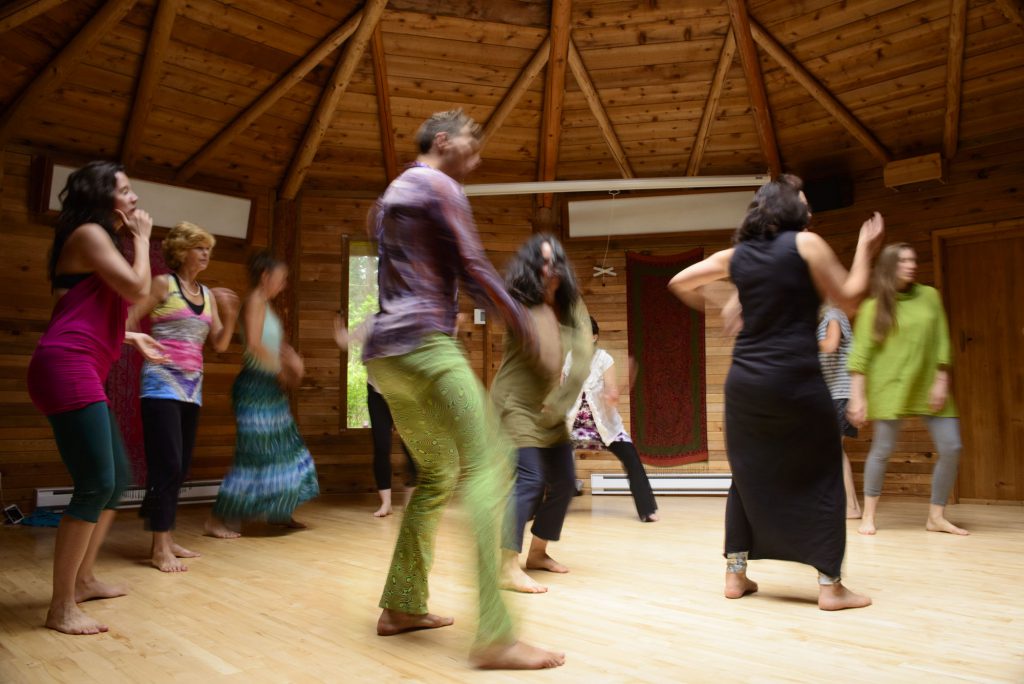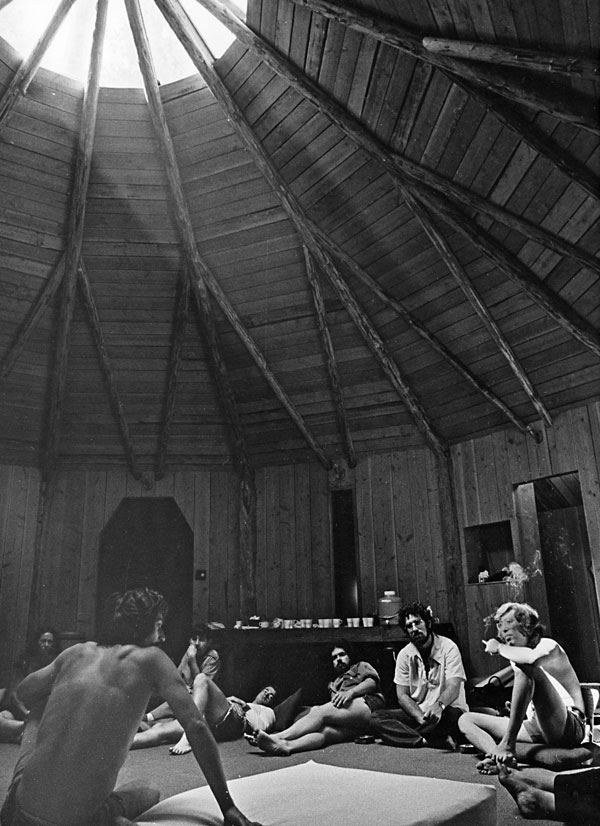Confessions, Heartbreak and Doorways
Wayne’s Zeitgeist series: Confessions of a Romantic Reductionist; the science of Heartbreak; Doorways to the Embodied Self: Eugene Gendlin and the Felt Sense by Marian Sandmaier; Moving On, a stop motion video by Ainslie Henderson; poetry by David Whyte; and five selections of background music.
Curated by Wayne Dodge. In the Zeitgeist series, Wayne wades through a world of publications, theories, music, poems and more, sharing his thoughts, discoveries and passions with particular reference to topics that touch The Haven.
Our lives are like islands in the sea, or like trees in the forest. The maple and the pine may whisper to each other with their leaves … But the trees also commingle their roots in the darkness underground, and the islands also hang together through the ocean’s bottom. ~ William James, psychologist and philosopher (1842-1910)
Book
Consciousness: Confessions of a Romantic Reductionist
By Christof Koch, The MIT Press, 2012
I could only recommend this book to Consciousness Theory Junkies (CTJ’s). It’s part memoir and part review of the state of consciousness theories in the 2010’s. Koch worked closely with Francis Crick (of DNA fame) – who became fascinated on the question of where does consciousness arise during the last portion of his life. Together they have worked on – and published in – the area of consciousness over the last 35 years (Crick died in 2004).
As such, I did not find it always successful in melding Koch’s personal tale with an understandable description of how he currently thinks about the question of consciousness.
So – to cut to the chase – Koch believes “…that consciousness is a fundamental, an elementary, property of living matter. Consciousness comes with organized chunks of matter. It is immanent in the organization of the system. It is a property of complex entities and cannot be further reduced to the action of more elementary properties. The larger and more highly networked the system, the greater the degree of consciousness.” (pg 119-120)
Which, in part, implies that non-living entities (e.g., computers) with appropriate organization could, according to Koch, have consciousness.
Articles
Heartbreak
A recent article in the Seattle Times (by Danielle Braff, Chicago Tribune, TNS) reviews the concept of love as an addiction – and thus approaching getting over a breakup similarly to approaching recovery from an addictive substance. This compliments the approach of looking at heartbreak as a reaction in the brain which overlaps our somatic pain responses.
Although each approach has some utility, I think that they also are reductionist – attempting to that we can understand the mysteries of the heart. Yes, heartbreak is literally painful; yes, I can addict myself to obsessing about (and sometimes actively pursuing) the object of my love – and there is also the fullness of loving that is quite different – and not addressed in these models.
Focusing
Doorways to the Embodied Self: Eugene Gendlin and the Felt Sense, by Marian Sandmaier, Psychotherapy Networker, 41;4 39-41,45-46 July/August 2017.
Eugene Gendlin started out in the 1950s as a philosopher deeply immersed in phenomenology. He became particularly interested in implicit knowing – the ways in which we grasp internal information before words are available to us. He was looking for ways to understand this issue other than purely philosophically while he was at the University of Chicago.
So he snuck into the student counseling center where he met Carl Rogers. He was taken with Rogers and what he saw happening in the center and added psychology to his program of studies.
In his research with Rogers, Gendlin noted that when individuals paused and accessed a bodily sense, they could then spead of thoughts and feelings that had previously been outside their awareness. Gendlin discribed this as a felt sense – a deep, pre-verbal knowledge embedded in the body.
Gendlin then worked on processes to encourage and support access to this felt sense’. He eventually called this process Focusing and published a self-help book of the same name in 1978 – with a follow up professionally oriented book – Focusing-Oriented Psychotherapy – in 1996.
Gendlin’s described a six step model:
- Clear a space – the work is best done with psychic room, including minimal distraction. In this space, opening questions can be asked – How am I, right now? or How is my life going?
- Identify a Felt Sense – this is not the mind-chatter – but the actual, in the here-and-now, body sensation.
- Give the Felt Sense a handle – this could be either a word description or an image – but some way to name it (using Gestalt terms). And greet this part of you in some way.
- Resonate – take time and space to determine if the original handle is both accurate and sufficient to encapsulate this Felt Sense. Also note that this is only a part of yourself, not your whole being.
- Inquire – this is also very similar to two-chair work – with the focus on open inquiry of the Felt Sense – What is the hardest part of this for you? or What does this Felt Sense need? – rather than the more dialogic Gestalt method. In this process there is often a bodily shift (what we would call an energetic shift).
- Receive the experience – Gendlin emphasized the importance of remaining open to whatever comes forward in this experience. He also noted that you can reassure the Felt Sense that you will come back if there is any hint of unfinished business at the end. “Take the attitude that you’re glad your body spoke to you, whatever it said. You need not believe, agree with, or do what the felt sense just now says. You need only receive it.”
None of this is new to those of us trained at Haven. Gendlin developed this technique during the same time and in similar milieu as Ben and Jock as they formulated their models.
I do like Genlin’s emphasis on the individual being able to do this on their own – without need for a professional interlocutor (unless desired). I also appreciate his emphasis on the utility of actually experiencing your body – your Felt Sense. As I read this article, I was reminded of Krishnamurti’s discussion of Sorrow.
Gendlin lived long enough to see the rise of mindfulness and mindfulness practices within the therapeutic community. “The mindfulness I observe in America is a good thing up to a point…. But the mindfulness that I see practiced is like sitting at the head of the stairs forever: Oh, I see anger; oh, I see impatience. And I say no, go downstairs with your attention. You go right downstairs into your belly and your chest…”
[And, yes, Buddhist mindfulness practices include disciplines that encourage going downstairs.]
I can imaging reviewing Focusing as a possible take home in programs – especially longer ones like the Phase programs.
Gendlin died in May of last year (2017). His work is continued by The Focusing Institute.
For those of you interested in the area of Digital Addiction, the July/August 2017 issue of Psychotherapy Networker has several articles exploring this issue, including an interview with Gabor Maté.
Offerings from others
Jennifer Hilton has given me a couple suggestions that I’m passing along here with gratitude.
“My son turned me on to Undark. I have been reading their articles and listening to podcasts. I really like their mission, and thought you would appreciate this as well.”
“And just for you Wayne, Moving On, which was sent to me by a friend on the day Marlyn passed. I shared with some friends at Haven already. To me, it speaks to her love, weaving, beauty, creative, expressive being-ness. May you enjoy and perhaps see and feel the beauty.
Poetry
Sometimes, by David Whyte
Sometimes
if you move carefully
through the forest,
breathing
like the ones
in the old stories,
who could cross
a shimmering bed of leaves
without a sound,
you come to a place
whose only task
is to trouble you
with tiny
but frightening requests,
conceived out of nowhere
but in this place
beginning to lead everywhere.
Requests to stop what
you are doing right now,
and
to stop what you
are becoming
while you do it,
questions
that can make
or unmake
a life,
questions
that have patiently
waited for you,
questions
that have no right
to go away.
David Whyte is an English poet of Irish extraction who currently lives in the San Juan islands in Washington state. If you don’t’ know his work, dive in and luxuriate. If you do know his work, dive in and luxuriate.
Music
As Gwen and I developed our library of workshop music, we realized that there was a whole category of background music that would be useful. These are usually instrumental. They are not so much moving in themselves – but rather supportive of particular moods. We would use them after the featured music when it was useful to allow the participant or the group to linger in the feeling.
Movie music has been the best source of this, as it is designed to evoke/support music without distracting. Prime examples include:
End Title from Out of Africa by John Barry
Ellis Island from Angels in America by Thomas Newman
Somewhere in Time from Somewhere in Time by John Barry
Brokeback Mountain soundtrack by John Barry
River from The Tree of Life soundtrack, by Alexandre Desplat
Now, any one of these may not be to your taste – too goopy, dated (I get that a lot nowadays) – and the idea of background music being available I think is one that supports group experience. Find your own.







